Largest telescopes on Earth
Telescopes on Earth
In astronomy we never see this but the past. We see the Moon, a second later, the Sun, eight minutes after the most nearest star, four years later, the most distant galaxy 10 billion years after.
The telescopes are machines back in time.
A telescope is an optical instrument that increases the brightness of the observed object in order to magnify the image. Its role as receiver of light is often more important than the magnification. Ground-based telescopes are, by definition, located on land and are mainly used in astronomy. They are equipped with reflectors mirrors coupled with various cameras and spectrometers to narrow field for faint objects, wide field and planetary images for infrared cameras. The older generation of telescopes of 6 meters in diameter using deformable mirrors not monolithic, very thick and very heavy. Future telescopes that pave the way for a new era of modern astronomy, using the opportunity to continuously monitor the deformations of monolithic mirrors or segmented, flexible and thus deformable under the action of gravity, wind, thermal effects, etc.
The technological limit of about 8 meters in diameter for a large monolithic mirror still prevails but the segmentation allows for giant telescopes, beyond 10 meters. The first light is expected in 2018 with the EELT, European Extremely Large Telescope. The new generation of giant telescopes on the horizon is.
- The Great Magellan Telescope (UTC) US-Australian will have a mirror 21 meters.
- The Thirty Meter Telescope (TMT) built by the Americans and Canadians will include a mirror 30 meters.
- Europeans have opted for the European Extremely Large Telescope (EELT), with a mirror 39.3 meters consisting of more than a thousand segments whose construction should begin in 2015.
Image: Co-financed by the EU, the European E-ELT telescope "European Extremely Large Telescope" should have a budget of around 1 billion euros for the European Southern Observatory (ESO) to build this telescope revolutionary with a mirror 39.3 meters in diameter, which will enter service in 2024-2026.
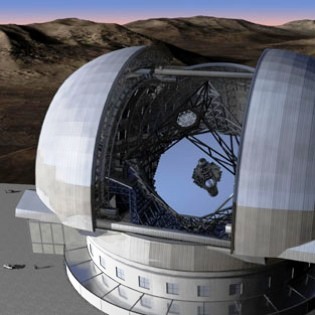
List of the largest optical reflecting telescopes
| List of largest optical reflecting telescopes (Top telescopes of 2010) | |||||
| Name | Aperture | Country | Site | Altitude | Date |
| Southern African Large Telescope (SALT) | 11 m | South Africa, USA, UK, Germany, Poland, New Zealand | Sutherland, South Africa | 1 759 m | 2005 |
| Gran Telescopio Canarias (GTC) | 10.4 m | Spain | La Palma, Canary Islands | 2 396 m | 2005 |
| Keck 2 | 9.8 m | USA | Mauna Kea, Hawaii | 4 145 m | 1996 |
| Keck 1 | 9.8 m | USA | Mauna Kea, Hawaii | 4 145 m | 1993 |
| Telescope Hobby-Eberly (HEB) | 9.2 m | USA, Germany | Mont Fowlkes, Texas | 1 980 m | 1997 |
| Large Binocular Telescope (LBT) | 2 x 8.4 m | Italy, USA, Germany | Mont Graham, Arizona | 3 267 m | 2004 |
| Subaru (NLT) | 8.3 m | Japan | Mauna Kea, Hawaii | 4 139 m | 1999 |
| Very Large Telescope UT1 (Antu) | 8.2 m | Europa (ESO) | Cerro Paranal, Chili | 2 635 m | 1998 |
| Very Large Telescope UT4 (Kueyen) | 8.2 m | Europa (ESO) | Cerro Paranal, Chili | 2 635 m | 1999 |
| Very Large Telescope UT4 (Melipal) | 8.2 m | Europa (ESO) | Cerro Paranal, Chili | 2 635 m | 2000 |
| Very Large Telescope UT4 (Yepun) | 8.2 m | Europa (ESO) | Cerro Paranal, Chili | 2 635 m | 2001 |
| Gemini North | 8.1 m | USA, UK, Canada, Chile, Australia, Argentina, Brazil | Mauna Kea, Hawaï | 4 205 m | 1999 |
| Gemini South | 8.1 m | USA, UK, Canada, Chile, Australia, Argentina, Brazil | Cerro Pachón, Chili | 2 715 m | 2001 |
| MMT | 6.5 m | USA | Arizona, USA | 2 347 m | 2000 |
| Magellan 1 (Walter Baade) | 6.5 m | USA | Coquimbo Region, Chile | 2 380 m | 2000 |
| Magellan 2 (Landon Clay) | 6.5 m | USA | Coquimbo Region, Chile | 2 380 m | 2002 |
LBT
United States: the Large Binocular Telescope (LBT) is an American telescope contains two mirrors of 8.4 meters in diameter, weighing 18 tons placed on the same mount. Opened in October 2004, the telescope has been operational since late 2006. To date, the most advanced optical telescope in terms of resolution. It is ten times more powerful and more accurate than the Hubble Space Telescope. It is located 3267 meters above sea level on Mount Graham, Arizona.
The choice of the location of the LBT was the subject of controversy from the San Carlos Apache Tribe, claiming that the mountain was sacred.
The construction of the LBT has nevertheless been taken after an act of Congress. The observatory was saved by two major fires during his eight years of construction. The overall cost of the LBT is 120 million. It is funded 50% by the United States.
The large binocular telescope provided LBT October 12, 2005 its first shots, that concerned the spiral galaxy NGC891, located 24 million light-years from Earth in the constellation Andromeda.
This telescope is designed primarily to see the light given off by planets orbiting other stars than the Sun. Despite the large number of exoplanets discovered none were actually seen as they are supposed to be there, with the oscillation they give to their stars.
It is extremely difficult to get rid of the starlight.
The LBT will plunge the star in the dark and isolate the light of the world to analyze its atmosphere.
* image of the LBT Large Binocular Telescope on Mount Graham in Arizona.

SALT
South Africa: the Southern African Large Telescope (SALT) is a telescope installed on the observation site of the South African Astronomical Observatory, South Africa in the Kalahari Desert in the Cape Province of North, north of Cape Town.
The SALT, operational since 2005, is an improved version of the Hobby-Eberly Telescope.
It uses 91 hexagonal mirrors 1 m, representing a primary mirror 9.2 meters to 11.1 meters of actual opening.
The frame is fixed in elevation and azimuth turning. The inclination is 37 degrees from vertical.
This is the secondary mirror, a moving axis, which can point to different regions of the sky and follow the Earth's rotation during the poses.
The tracking system (tracker) uses bearings turntable, roller wheels on axle, telescopic arms and precision cardan joints.
This technology, similar to that used in radio astronomy at Arecibo (Puerto Rico), minimize the weight of the whole, amounting to 45 tones.
SALT is equipped with two spectrographs and a CCD camera (called Salticam).
The cost of the SALT telescope was 30 million. Its construction is funded by several universities and international organizations gathered around the National Research Foundation of South Africa.
Image: image of the Southern African Large Telescope (SALT)

GTC
Spain: Great Canary Telescope, or Gran Telescopio Canarias (GTC) to turn its huge lens at the sky in July 2007.
The mirror of the GTC measure exactly 10.4 meters on average, the record in 2007 of the largest optical telescope, is held by 10 meters in diameter for each twin instruments of all Keck on Mauna Kea, Hawaii.
The GTC is composed of 36 hexagonal segments, each measuring 936 independent adjacent to 3 mm thick. The secondary mirror of the telescope Ritchey-Chrétien measure 1176 mm in diameter.
The tertiary mirror, oval directional measure 1062 x 1510 mm.
The optical assembly is installed on a hill on the Island of La Palma in the Canary Islands, the giant instrument was finally commissioned in 2008.
The cost of the total, amounted to $ 180 million. It was funded mainly by the Spanish government, with additional funds from Mexico and the University of Florida.
Image: image of the GTC, Gran Telescopio Canarias on the hill of La Palma in the Canary Islands.

ALMA
Chile: five thousand meters, the Chajnantor plateau in the Atacama Desert has the largest network of radio telescopes in the world. One billion euros have been invested to achieve the Alma (Atacama Large Millimeter / submillimeter Array) in cooperation with Chile. 66 antennas observe the Universe in the millimeter-wave and submillimeter. This instrument analyzes the emissions from the coldest regions of the Universe: clouds of gas and dust where stars are born in distant galaxies, through the study of comets and small bodies of the solar system. The Alma that each of its antenna weighs 115 tons is located 5000 meters above sea level to dispose of the air as dry as possible.
The Chilean Chajnantor plateau is the ideal in terms of astronomical despite very strong winds and temperatures ranging from +20 to -20 degrees Celsius.
Human intervention is limited to the top and the data collected by the antennas are transmitted through glass fibers to a supercomputer connected to a base camp, the OSF (Operations Support Facility) located at 2900 meters. A fine example of scientific cooperation (Japan, Europe, North America and Asia), whose observations begin operating in 2011.
Image: image of Alma's network will consist of 66 antennas spread over 18 km, combined to provide the largest radio telescope in the world.
credit Alma

Names of the four VLT telescopes
Originally (1998) the four VLT telescopes Unitarians were the technical names and little suggestive of UT1, UT2, UT3, UT4. In March 1999, at the opening of the Paranal Observatory, four more poetic names were chosen. The four large telescopes were called Antu Kueyen, Melipal and Yepun. These names evoke objects in the sky, in Mapudungun or Mapuche language, which is the Native Ameriindian language spoken by the Mapuche community in Chile and Argentina. This indigenous population lives mainly in the southern region of Bio-Bio River, some 500 km south of Santiago. This is a young schoolgirl of 17, the Chilean region of Antofagasta, Jorssy Albanez Castilla of Chuquicamata near the city of Calama, which proposed four names from the rich cultural heritage of Chile. The four Unit Telescopes are now known as Antu (the Sun) Kueyen (Moon) Melipal (Southern Cross) and Yepun (Venus, the evening star).
NB: The Cerro Paranal is a mountain located in the Atacama Desert in northern Chile, 110 km south of Antofagasta and 80 km north of Tal-Tal. While the largest ground-based telescopes are located at altitude it is because our atmosphere is a real embarrassment for the observation of the sky. Cerro Paranal is an exceptional site for the purity of its sky.
Image: The Very Large Telescope Array (VLT) is an installation of ESO observing in the visible. The VLT consists of four Unit Telescopes equipped with primary mirror 8.2 meters in diameter and four Auxiliary Telescopes, mobile, 1.8 meters. All these telescopes can work together to form a giant interferometer VLTI. The VLTI allows astronomers to see details with accuracy up to 25 times greater than with the telescopes used separately.

Articles on the same theme
"The data available on this site may be used provided that the source is duly acknowledged."
 Low
Earth Orbits and their uses
Low
Earth Orbits and their uses 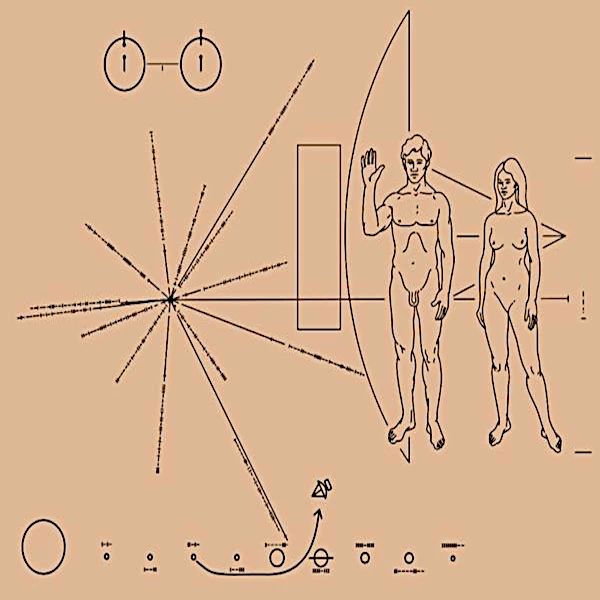 Pioneer, first message to extraterrestrials !
Pioneer, first message to extraterrestrials ! 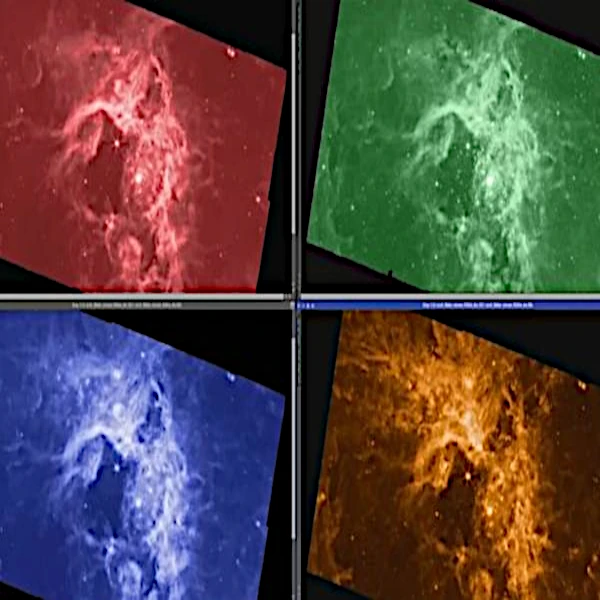 How to see infrared images from JWST?
How to see infrared images from JWST?  Sputnik, the Russian
companion
Sputnik, the Russian
companion 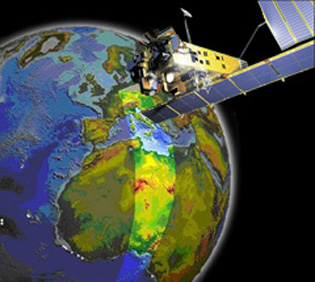 Envisat, the eye high-resolution of the Earth
Envisat, the eye high-resolution of the Earth 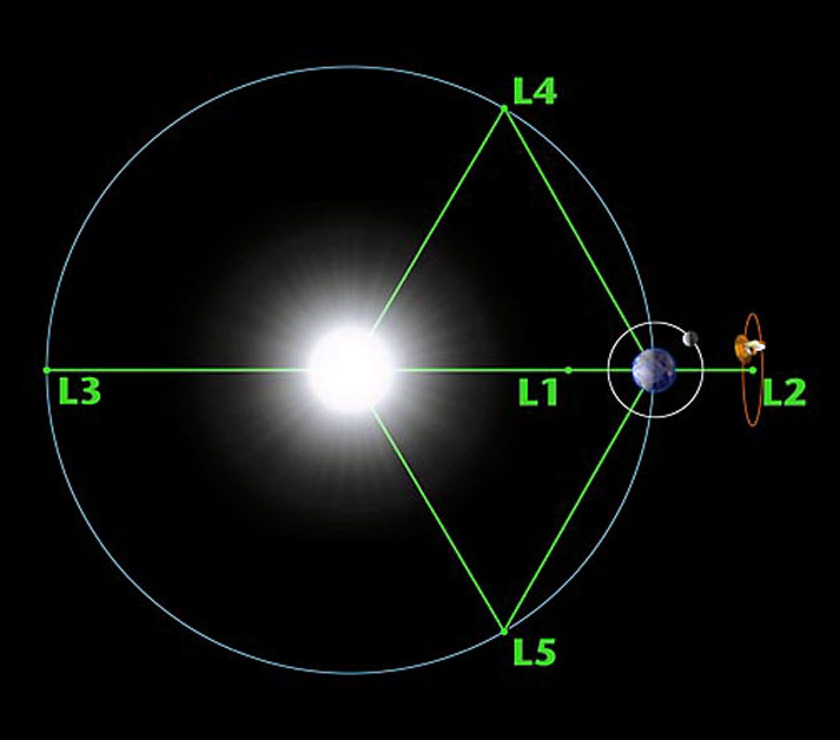 Lagrange points
Lagrange points  Mars Reconnaissance Orbiter
Mars Reconnaissance Orbiter  Kepler
space telescope in search of life
Kepler
space telescope in search of life  The Eclipse Seen from Above: What Satellites Reveal About the Hidden Sun
The Eclipse Seen from Above: What Satellites Reveal About the Hidden Sun  Why Measure Space at the Nanometer Level?
Why Measure Space at the Nanometer Level? 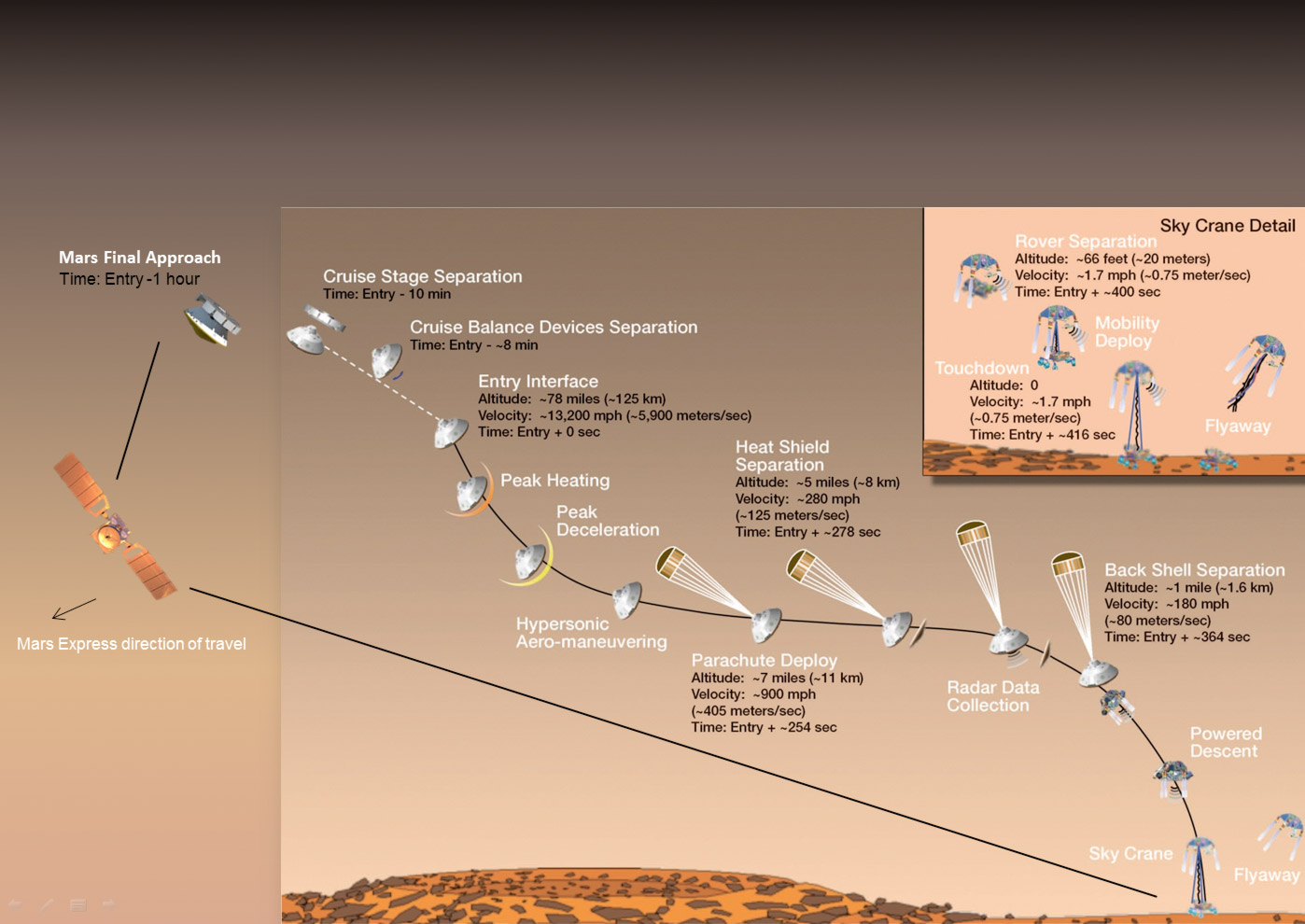 High-risk landing for Curiosity in 2012
High-risk landing for Curiosity in 2012  Cheops Space Telescope: A New Vision on Exoplanets
Cheops Space Telescope: A New Vision on Exoplanets  The world of Planck
The world of Planck
 Rosetta Space Probe: Comet Churyumov-Gerasimenko
Rosetta Space Probe: Comet Churyumov-Gerasimenko  Satellites that measure underwater relief
Satellites that measure underwater relief  Adaptive optics and laser star
Adaptive optics and laser star  Flyover
of Mercury by MESSENGER
Flyover
of Mercury by MESSENGER  How GPS Locates
Your Position at Any Time?
How GPS Locates
Your Position at Any Time?  ISS in low Earth
orbit at 415 km altitude
ISS in low Earth
orbit at 415 km altitude  Voyager 1 Leaves Us Without Looking Back: The "Pale Blue Dot"
Voyager 1 Leaves Us Without Looking Back: The "Pale Blue Dot" 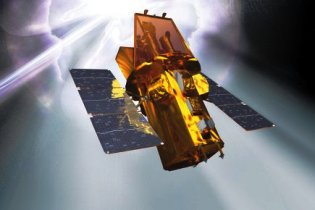 Space
telescopes are the eyes of the Earth
Space
telescopes are the eyes of the Earth 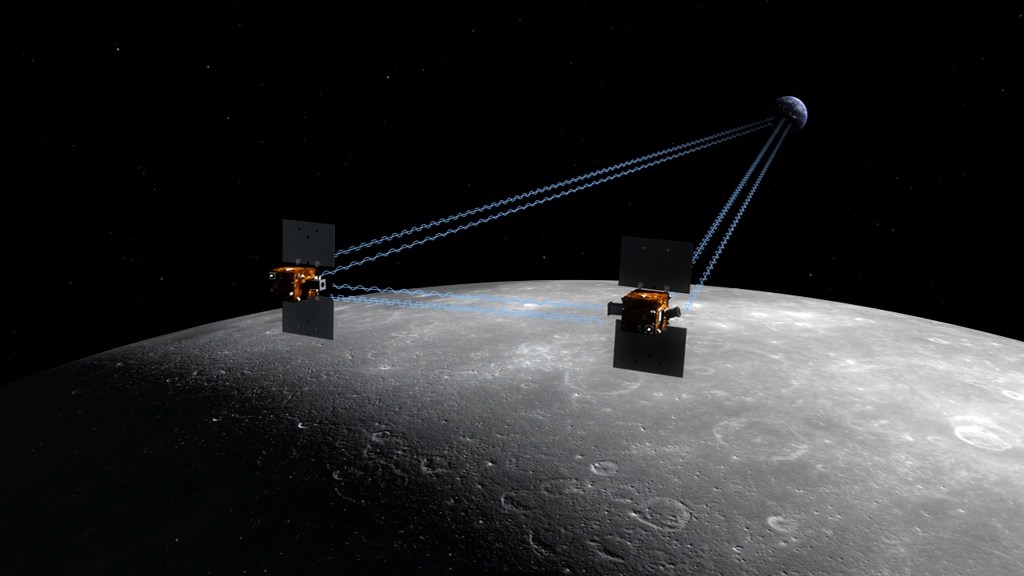 What is a space probe?
What is a space probe?
 JWST in the
depths of space
JWST in the
depths of space  The
GAIA satellite maps the Milky Way
The
GAIA satellite maps the Milky Way  How to calculate the synchronous orbit?
How to calculate the synchronous orbit?  Modern cathedrals
Modern cathedrals
 Mercury probes
Mercury probes  Space debris are increasing exponentially
Space debris are increasing exponentially 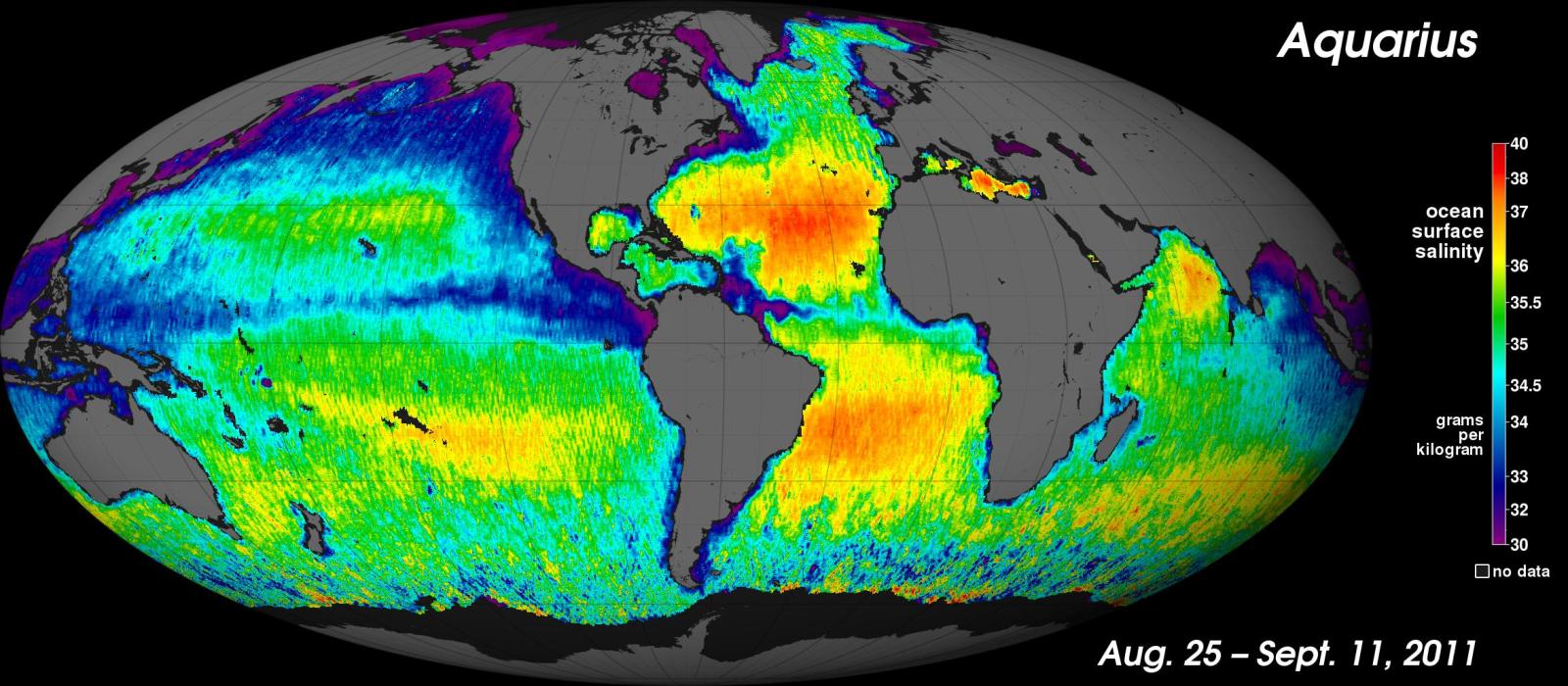 New image
of ocean salinity
New image
of ocean salinity  JWST: An Unprecedented Look at the First Lights of the Universe
JWST: An Unprecedented Look at the First Lights of the Universe  METEOSAT: A
Key Satellite for Climate Monitoring
METEOSAT: A
Key Satellite for Climate Monitoring  Curiosity, the first shovel, sample of Martian soil
Curiosity, the first shovel, sample of Martian soil  Probes of Mars
Probes of Mars
 Living on the
planet Mars
Living on the
planet Mars 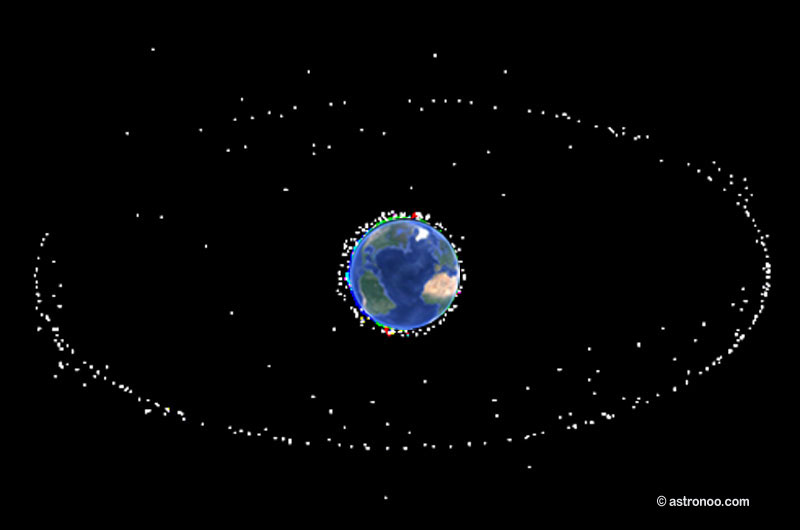 Where is the geostationary orbit?
Where is the geostationary orbit?  MOM,
the technological demonstration
MOM,
the technological demonstration  Venus probes
Venus probes 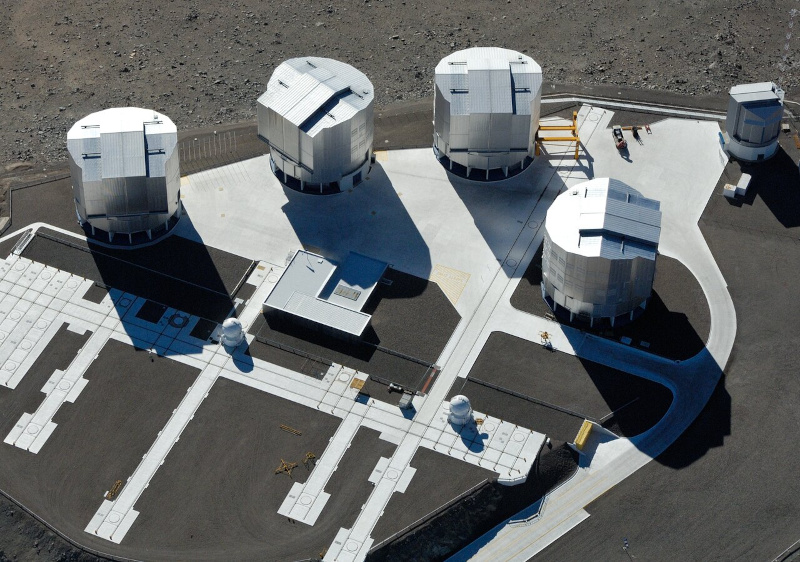 What is an interferometer?
What is an interferometer?
 The Philae Robot and the Rosetta Comet
The Philae Robot and the Rosetta Comet  Mauna Kea Under the Stars: The CFHT Telescope in Pursuit of the Universe's Mysteries
Mauna Kea Under the Stars: The CFHT Telescope in Pursuit of the Universe's Mysteries